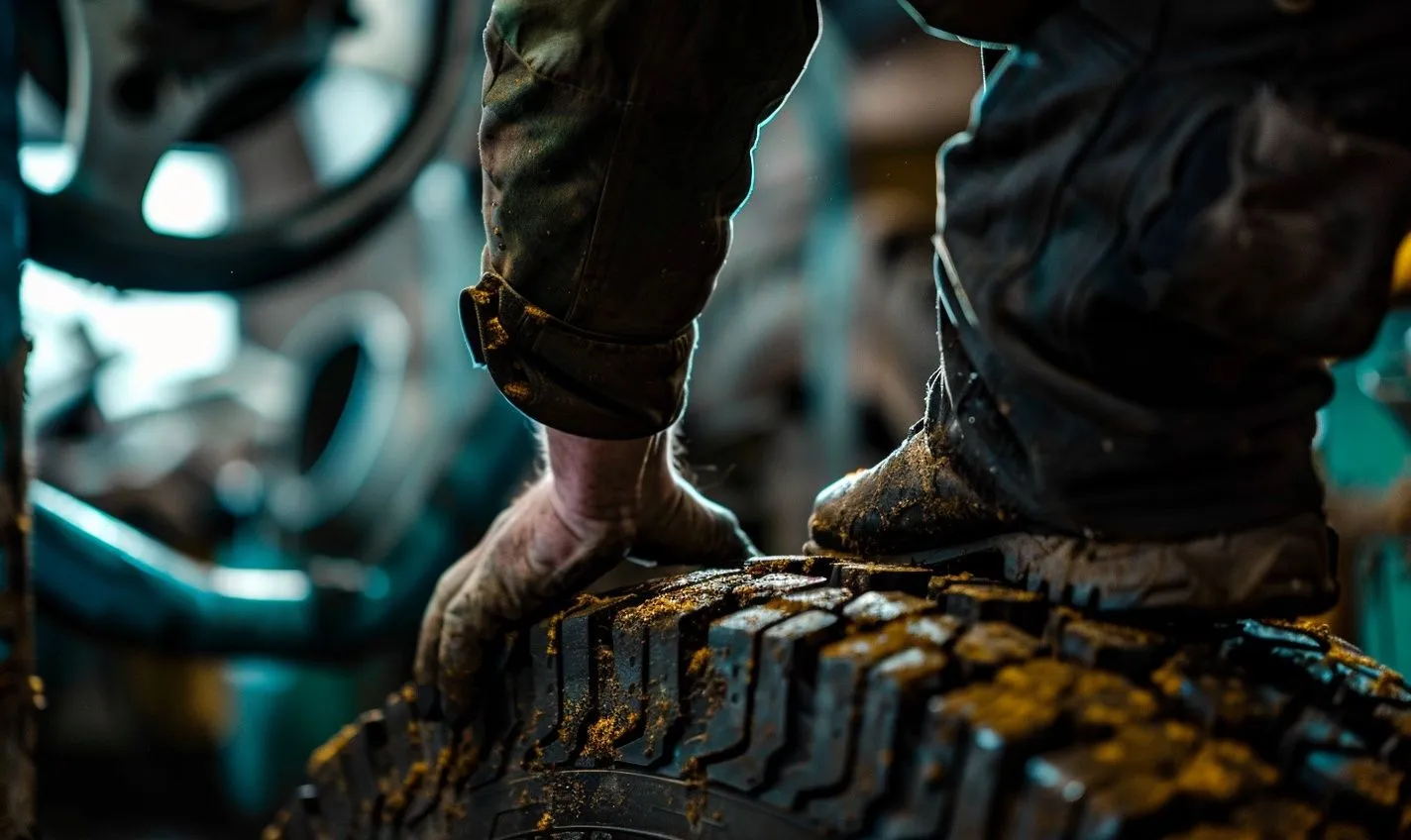
As an expert in the automotive industry, I understand the importance of maintaining the health and longevity of your tires. Tire dry rot and cracking are common issues that can significantly impact your vehicle’s safety and performance. However, with the proper knowledge and proactive measures, you can prevent tire cracking and fix dry rot before it becomes a significant concern.
Tire dry rot occurs when the rubber compounds in a tire deteriorate due to exposure to UV rays, heat, and air. This can result in visible cracks or splits on the tire’s surface, compromising its structural integrity. By regularly inspecting your tires for signs of dry rot and ensuring they are correctly inflated and stored in a cool, dry place, you can prevent this issue from escalating.
If you notice signs of tire cracking or dry rot, it is crucial to address the issue promptly to avoid potential safety hazards on the road. One effective way to fix dry rot is using specialized tire conditioners or sealants to help rejuvenate the rubber and restore flexibility. Consulting a professional mechanic for tire inspection and potential replacement may be necessary in more severe cases.
By staying proactive and implementing proper maintenance practices, you can significantly prolong the lifespan of your tires and ensure a smoother, safer driving experience for years to come. Let’s delve deeper into how to prevent tire cracking and address dry rot effectively to keep your tires in top condition.
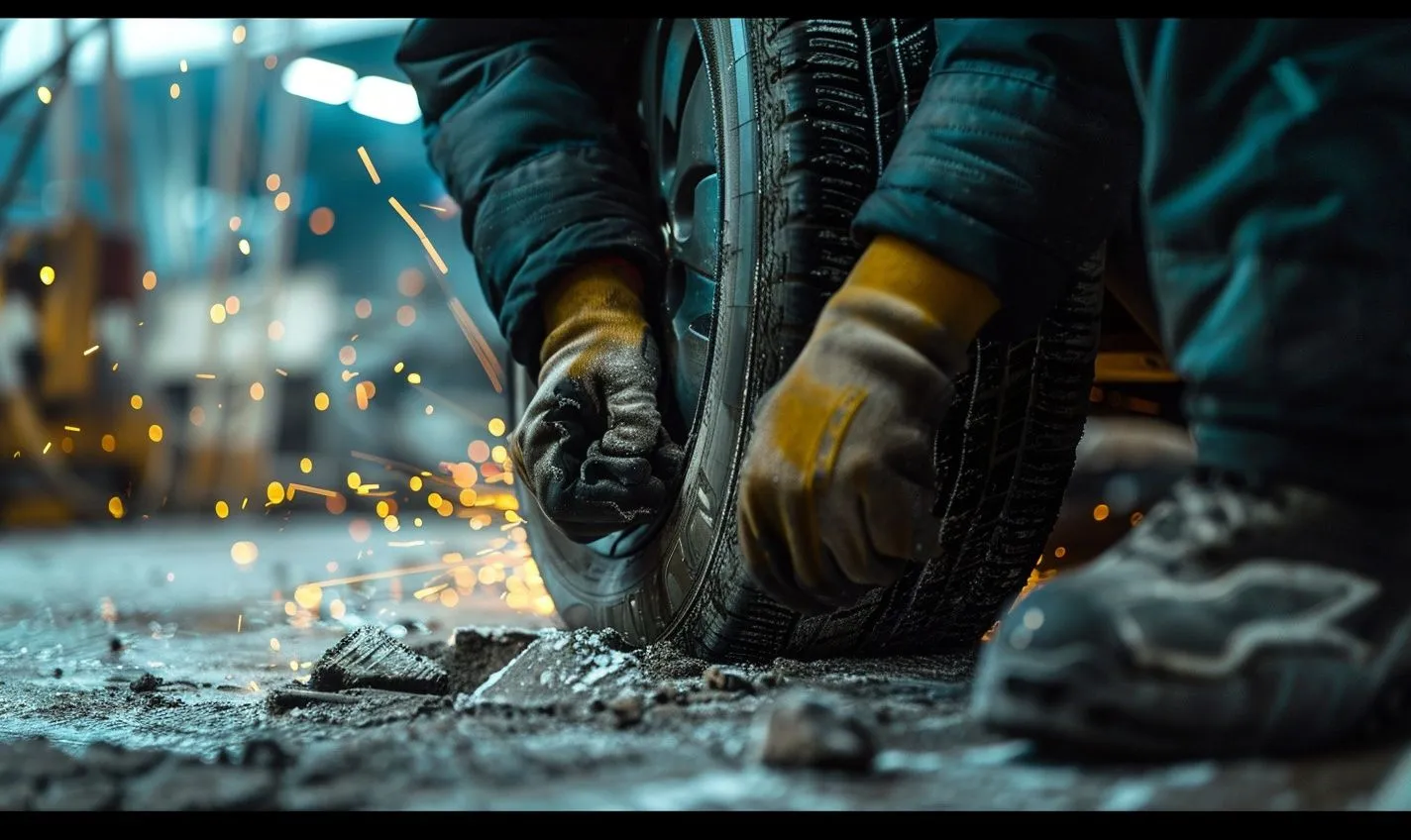
Why Tire Dry Rot and Cracking Happen
Have you ever wondered why your tires develop dry rot and crack over time? Let’s explore the reasons behind these common tire issues.
Understanding the Causes:
1. UV exposure: Just like our skin, tires can also suffer from sun damage.
2. Oxidation: The oxygen in the air reacts with the rubber compounds in your tires.
3. Heat: High temperatures can accelerate the breakdown of tire materials.
Moisture and Time:
Combined with time, moisture seeping into the tire’s rubber compounds can lead to dry rot and cracking. The elements take their toll, even on the toughest tires.
Impacts of Neglect:
Ignoring these signs can compromise your safety on the road. Imagine the danger of a tire blowout while cruising down the highway. Scary.
Prevention Is Key:
Regular tire inspections and simple maintenance tips can help prevent dry rot and cracking.
Proper tire inflation, storage practices, and using tire protectants can extend the lifespan of your tires.
Fixing the Issue:
If you notice signs of dry rot in your tires, don’t worry. There are effective ways to fix dry rot and ensure they are safe to drive on.
Special tire conditioners and professional repairs can help restore the integrity of your tires.
Don’t Delay:
Remember, your tires are the only point of contact between your vehicle and the road. Taking care of them is crucial for a smooth and safe driving experience.
Ensuring your tires are in top condition keeps you safe and saves you money in the long run.
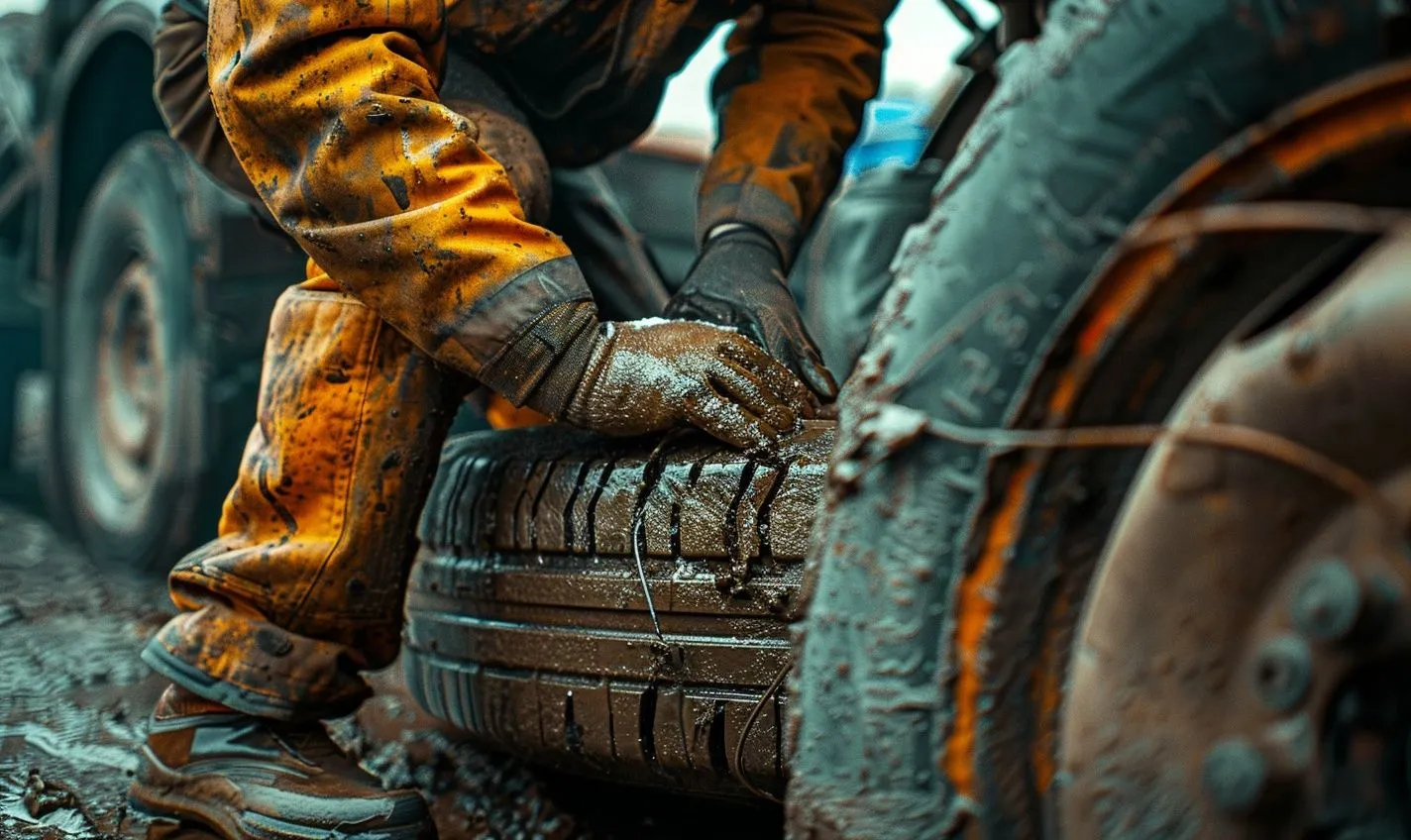
Recognizing Dry Rot and Cracking in Your Tires
What is Tire Dry Rot?
Tire dry rot is a common issue caused by aging, prolonged exposure to UV rays, harsh weather conditions, and improper maintenance.
Understanding Tire Cracking
Tire cracking occurs when tire compounds break down over time, creating visible cracks on the sidewalls and treads.
Signs of Dry Rot and Cracking:
- Cracks on the sidewalls or between treads
- Brittle and flaky rubber texture
- Visible discoloration or fading
Have you noticed any of these signs on your tires?
Why Addressing Dry Rot Is Crucial
Driving with dry rot tires can decrease traction, blowouts, and accidents. Your safety on the road is non-negotiable.
How to Fix Dry Rot:
- Clean the affected area with mild soap and water
- Apply a specialized tire conditioner or sealant
- Consult a professional if the damage is extensive
Ready to give your tires some TLC?
Preventing Tire Cracking:
Regularly inspect your tires for signs of cracking. Ensure proper tire inflation, storage, and rotation to prevent premature aging.
Seeking Professional Help
Don’t hesitate to consult a trusted mechanic for expert advice and solutions for severe tire cracking issues.
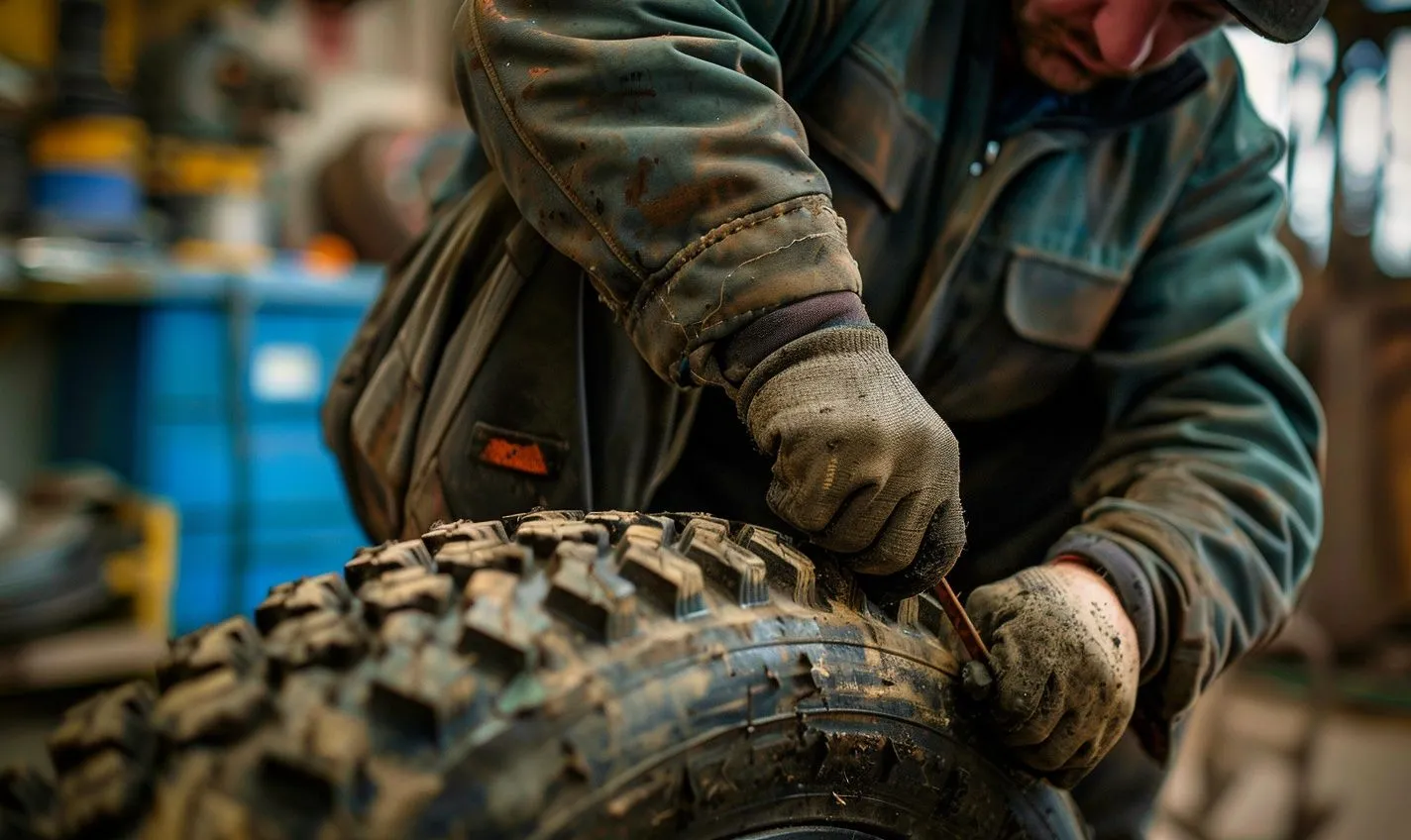
Impacts of Driving with Dry Rot Tires
So, you’ve noticed some tire cracking and tire dry rot on your wheels. Maybe you’re thinking, “How bad can it be?” Well, let’s dive into the consequences of driving on tires with dry rot:
Decreased Traction
When tires have dry rot, the rubber hardens and loses its grip on the road. This can lead to reduced traction, especially in wet or slippery conditions. Imagine walking on ice with worn-out sneakers—not the safest scenario, right?
Increased Risk of Blowouts
Tire cracking weakens the structural integrity of tires, making them more susceptible to blowouts. Nobody wants to experience a blowout while cruising down the highway at full speed—it’s a scary and potentially dangerous situation.
Poor Handling and Stability
With dry rot affecting your tires, you might notice that your vehicle doesn’t handle as smoothly as it used to. Steering may feel off, and stability could be compromised. It’s like trying to navigate a rocky path on a wobbly bicycle – not the most reassuring feeling.
Overall Risk to Safety
Driving on tires with dry rot ultimately puts your safety and the safety of others at risk. The last thing you want is to be involved in an accident that could have been prevented by addressing the issue early on. Safety should always come first when it comes to your vehicle.
Remember, the impacts of driving with dry-rot tires go beyond aesthetics. It’s critical to promptly address any signs of tire cracking or dry rot to ensure your safety on the road. Stay tuned for our next blog post on methods to prevent tire dry rot!
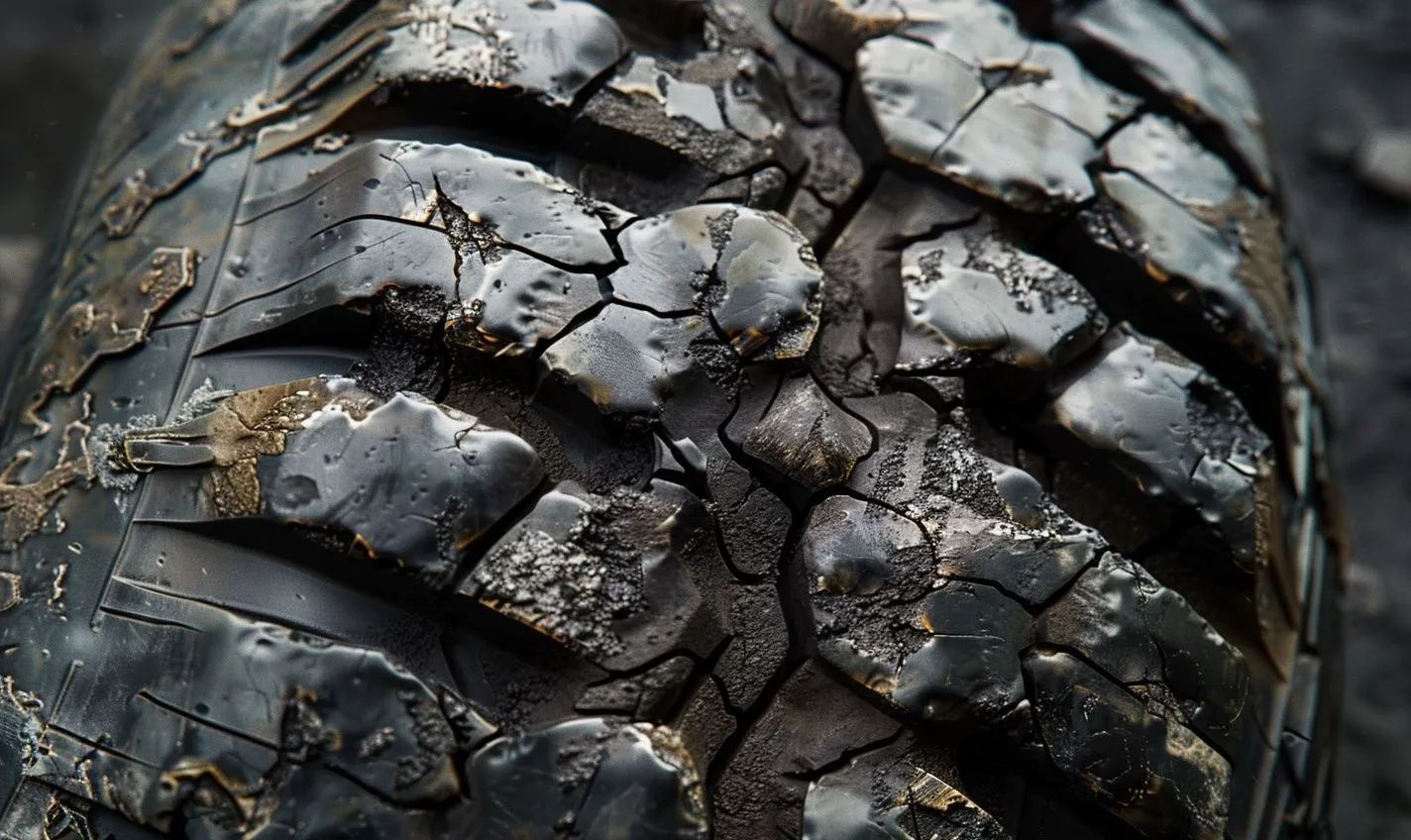
Methods to Prevent Tire Dry Rot
Keeping Your Tires in Top Shape
Tire dry rot and cracking are common issues caused by neglecting proper tire maintenance. Taking proactive steps to prevent these problems ensures a longer tire lifespan and a safer driving experience.
Regularly Check Tire Pressure
Ensuring your tires are properly inflated is crucial in preventing tire dry rot. Underinflated tires can lead to excessive heat buildup, accelerating the aging process of the rubber.
Regularly check your tire pressure and inflate it to the manufacturer’s recommended levels to prevent dry rot and cracking.
Keep Tires Clean and Protected
UV rays and exposure to harsh chemicals can accelerate tire aging. To prevent dry rot, clean your tires regularly with mild soap and water and protect them with a UV-resistant tire dressing.
Store Tires Properly
If you have spare or seasonal tires that are not in use, store them in a cool, dry place away from sunlight and extreme temperatures. This will help prevent premature aging and dry rot.
Consider using tire covers or storing tires in airtight bags to provide extra protection against environmental factors.
Effective Ways to Fix Dry Rot in Tires
Dealing with dry rot in tires can be a headache, but fear not! There are effective ways to tackle this issue and ensure your tires are safe on the road.
Inspect the Damage
Before attempting to fix dry rot, assess the extent of the damage. Look for tire cracking, brittleness, and discoloration on the tire’s surface.
Patch Small Cracks
If you notice minor cracks on the tire, you can use a patch kit to seal them. This temporary fix can help prevent further deterioration.
Apply Conditioner
Special tire conditioners can help rejuvenate dry and cracked tires. These products moisturize the rubber, improving flexibility and strength.
Consider Retreading
For severe cases of dry rot, retreading the tire may be necessary. This process involves replacing the worn-out tread and extending the tire’s lifespan.
And remember, prevention is critical when it comes to tire maintenance. By taking proactive steps to care for your tires, you can avoid the hassle of dealing with dry rot and cracking issues in the future.
Importance of Regular Tire Inspections
Keeping your tires in top condition is crucial for safe driving experiences and avoiding unexpected breakdowns. One of the critical aspects of tire maintenance is conducting regular inspections to catch issues like tire dry rot and cracking early on.
Why Tire Dry Rot and Cracking Happen
Tire dry rot occurs due to prolonged exposure to sunlight and oxygen, which breaks down the rubber compounds. Cracking in tires can also be caused by age, low tire pressure, or improper storage.
Recognizing Dry Rot and Cracking in Your Tires
Inspect your tires for signs of dry rot, such as fine cracks on the sidewall or tread. Cracking can appear as deep grooves or visible gaps in the rubber surface. Look out for these when checking your tires.
Impacts of Driving with Dry Rot Tires
Driving on tires with dry rot or cracks is dangerous as they can lead to blowouts, loss of traction, and poor handling on the road. It’s vital to address these issues promptly to ensure your safety.
Methods to Prevent Tire Dry Rot
- Regularly clean your tires with mild soap and water to remove dirt and grime.
- Apply a UV protectant to shield tires from the harmful effects of sunlight.
- Keep tires properly inflated to avoid excessive flexing that can cause dry rot.
Effective Ways to Fix Dry Rot in Tires
- Consult a professional tire technician to assess the extent of the damage.
- Tire patches or sealants can be used to repair minor dry rot issues.
- In severe cases, tire replacement might be necessary to ensure safety on the road.
Regular tire inspections are your first line of defense against tire dry rot and cracking. By staying proactive and addressing any issues promptly, you can extend the lifespan of your tires and drive confidently on the road.
Tips for Extending the Lifespan of Your Tires
Regularly Check Tire Pressure
Maintaining adequate tire pressure is crucial to prevent tire dry rot and cracking. Low pressure can create unnecessary stress on the tire, leading to damage.
Rotate Your Tires
Rotating your tires promotes even wear, helping prevent cracking in specific tire areas due to consistent use.
Avoid Overloading Your Vehicle
Excessive weight can strain your tires, increasing the likelihood of dry rot. Be mindful of your vehicle’s weight capacity.
Store Tires Properly
When storing tires, keep them away from direct sunlight and harsh weather conditions to prevent premature aging and cracking.
Regularly Clean Your Tires
Keeping tires clean from dirt and debris prevents accelerated wear and dry rot. A simple wash can extend their lifespan.
Drive Smoothly
Avoid sudden stops and sharp turns, as they can cause unnecessary friction on the tires, leading to potential cracking and dry rot.
Invest in Quality Tires
High-quality tires are less prone to dry rot and cracking. While they may be more expensive, their longevity can outweigh the initial investment.
Professional Help for Severe Tire Cracking Issues
So, your tires are showing severe tire cracking issues. You might be wondering – can you do anything to salvage them, or is it time to say goodbye to your beloved car tires? Well, fret not! There is light at the end of the tunnel, and professional help can steer you in the right direction.
Understanding the Severity of the Issue
Before seeking professional assistance, it’s crucial to understand the gravity of the tire cracking problem. Are the cracks superficial, or do they delve deep into the tire’s structure? A tire expert can assess the extent of the damage and recommend the best course of action.
Options You Might Encounter
When facing severe tire cracking, there are several routes that a professional might suggest:
- Tire Patching or Plugging – If the cracks are minimal, patching or plugging might be a viable solution to restore tire integrity.
- Tire Replacement – In cases of extensive cracking that compromises the tire’s safety, replacement might be the only option.
- Expert Recommendations – Trust the tire professional to provide informed suggestions based on the severity of the issue.
The Benefits of Seeking Professional Help
While a DIY approach might seem tempting, there are numerous advantages to opting for professional tire services:
- Expertise – Tire professionals possess the knowledge and skills to assess and address serious tire issues.
- Safety – Ensuring your tires are in top condition is paramount for your safety on the road.
- Longevity – Proper tire maintenance by professionals can extend the life of your tires.
Remember, when dealing with severe tire cracking, it’s best to leave it to the experts who can ensure your safety and the longevity of your vehicle’s tires. Trust their expertise and let them guide you toward a safer driving experience.
Conclusion
In conclusion, taking care of our tires is essential for safety and longevity. Understanding the causes and signs of tire dry rot and cracking can help us prevent them before they become serious.
Regularly inspecting your tires for any signs of dry rot and cracking is a simple yet effective way to catch potential problems early. Maintaining proper tire pressure, storing tires in a cool, dry place, and using tire covers when necessary can significantly reduce the chances of these issues occurring.
If you notice dry rot or cracking on your tires, it’s essential to address the problem promptly. Consulting with a professional tire technician can help determine if the tires can be safely repaired or need to be replaced to ensure your safety on the road.
By following the preventive measures mentioned in this blog post and promptly addressing any signs of tire dry rot or cracking, you can extend the lifespan of your tires and drive with peace of mind, knowing that you are taking the necessary steps to keep yourself and others safe on the road.
Frequently Asked Questions (FAQs)
What is tire dry rot?
Tire dry rot is when tires develop cracks, typically due to aging or prolonged exposure to sunlight and harsh weather conditions.
How can I identify tire cracking?
Inspect your tires for visible cracks on the sidewalls or between the treads. These cracks may appear as deep fissures or surface crazing.
Can you fix the dry rot on the tires?
In some cases, minor tire dry rot can be mitigated by using tire conditioners or sealants. However, severe dry rot may require tire replacement.
How can I prevent tire cracking?
To prevent tire cracking, regularly inspect your tires for signs of damage, keep them properly inflated, and store them away from direct sunlight when not in use.
Are there any products to help prevent tire dry rot?
Tire protectants are available on the market to help inhibit dry rot formation by providing UV protection and moisturizing the rubber.
When should I replace tires with dry rot?
If your tires show significant dry rot or cracking, especially in critical areas like the sidewalls, they should be replaced to ensure safety.